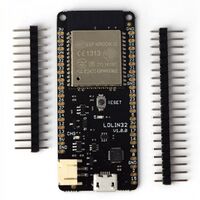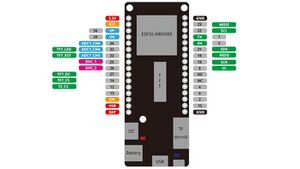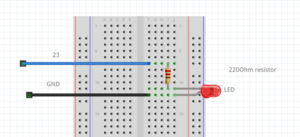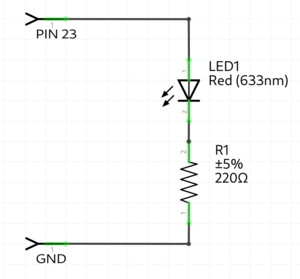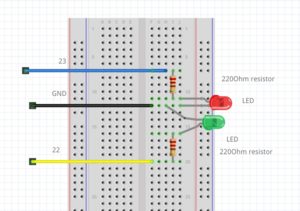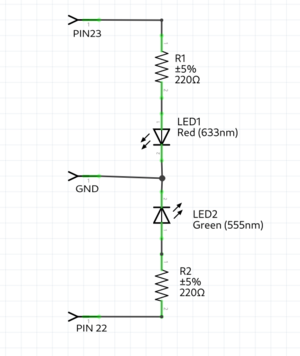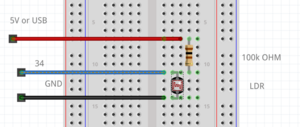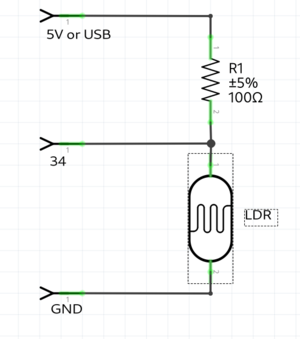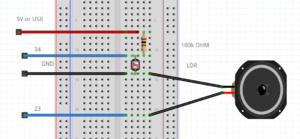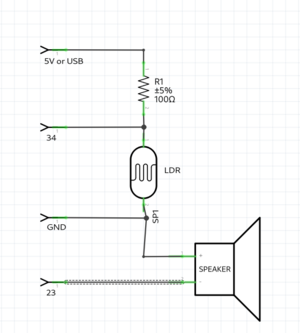Microcontroller 101: Difference between revisions
| Line 142: | Line 142: | ||
==== Poti & speaker example ==== | ==== Poti & speaker example ==== | ||
int poti = 34; //the pto pin | |||
int speaker = 23; | |||
void setup() { | |||
pinMode(poti,INPUT); //poti is an INPUT | |||
pinMode(speaker,OUTPUT); //speaker is a OUTPUT | |||
} | |||
void loop() { | |||
int value = analogRead(poti); // read the analog value of the poti | |||
Serial.println(value); // print the value of the poti, open serial monitor | |||
tone(speaker,value); //create a frequency on the speaker pin; the frequency hertz is the value | |||
delay(10); | |||
} | |||
==== Button & alarm example ==== | ==== Button & alarm example ==== | ||
Revision as of 12:46, 11 April 2024
ḿ̬̏ͤͅỉ͔͖̜͌c͕͗ͤ̕̕r̴̨̦͕̝o̯̱̊͊͢c͕͗ͤ̕̕o̯̱̊͊͢ṇ̤͛̒̍t̲̂̓ͩ̑r̴̨̦͕̝o̯̱̊͊͢l̙͖̑̾ͣl̙͖̑̾ͣẹ̿͋̒̕r̴̨̦͕̝ 1̨̹̦͍̀0̗̜͕̅̃1̨̹̦͍̀
09-04-2024 e͎l͎e͎c͎t͎r͎i͎c͎
https://pzwiki.wdka.nl/mw-mediadesign/images/7/7e/Cricket.mp4
sensors and actuators
introduction to Arduino
LOLIN 32 Installation party :~)
more info about the lolin32 is here: https://www.wemos.cc/en/latest/d32/d32_pro.html
step 1: download Arduino software
step 2: download driver for microcontroller
step 3: install driver
_windows: open Device Manager >> find UART device >> right click and update driver >> select driver
Hello World!
in the Arduino program, select the correct board (WEMOS LOLIN32) and select the USB port you are using (if you are unsure, check the listed ports, unplug and see what changed)
void setup() {
Serial.begin(115200);
}
void loop() {
Serial.println("Hello World!"); //sends a message to the computer
}
Simple Led blink example
// always use a "preresistor" with the LED, because the 5v coming from the microcontroller is too much
// a LED only consumes ~2.5 volt, the resistor the other volt
//
int ledPin = 23; //the int ledPin is 13
void setup() {
pinMode(ledPin,OUTPUT); //ledPin is a OUTPUT
}
void loop() {
digitalWrite(ledPin,HIGH); //turns pin 13 on
delay(500); //stops the loop for 500 milliseconds
digitalWrite(ledPin,LOW); //turns pin 13 off
delay(500); //stops the loop for 500 milliseconds
}
Traffic light example
int RedLedPin = 23; //the int RedLedPin is 13
int GreenLedPin = 22; //the int GreenLedPin is 12
void setup() {
pinMode(RedLedPin,OUTPUT); //ledPin is a OUTPUT
pinMode(GreenLedPin,OUTPUT); //ledPin is a OUTPUT
}
void loop() {
digitalWrite(GreenLedPin,HIGH); //turns green led on
delay(5000); //stops the loop for 5000 milliseconds
for(int i = 0; i < 5; i++){ //this for loop gets 5 times repeated
digitalWrite(GreenLedPin,LOW); //turns green led off
delay(500); //stops the loop for 500 milliseconds
digitalWrite(GreenLedPin,HIGH); //turns green led off
delay(500); //stops the loop for 500 milliseconds
}
digitalWrite(GreenLedPin,LOW); //turns green led off
digitalWrite(RedLedPin,HIGH); //turns red led on
delay(5000); //stops the loop for 5000 milliseconds
digitalWrite(RedLedPin,LOW); //turns red led on
}
LDR example
example with a light resistor. keep in mind the LDR pin needs to be a pin with a ADC(analog to digital converter), because you check the analog voltage. on the arduino these are the ANALOG IN pins. on the ESP32 the pins with the ADC(check the pinout graphic)
int LDR = 34; //the LDR pin
void setup() {
pinMode(LDR,INPUT); //LDR is an INPUT
}
void loop() {
int value = analogRead(LDR); // read the analog value of the LDR
Serial.println(value); // print the value of the LDR, open serial monitor
delay(10);
}
LDR & speaker example
int LDR = 34; //the LDR pin
int speaker = 23;
void setup() {
pinMode(LDR,INPUT); //LDR is an INPUT
pinMode(speaker,OUTPUT); //speaker is a OUTPUT
}
void loop() {
int value = analogRead(LDR); // read the analog value of the LDR
Serial.println(value); // print the value of the LDR, open serial monitor
tone(speaker,value); //create a frequency on the speaker pin; the frequency hertz is the value
delay(10);
}
Poti example
Poti & speaker example
int poti = 34; //the pto pin int speaker = 23;
void setup() {
pinMode(poti,INPUT); //poti is an INPUT pinMode(speaker,OUTPUT); //speaker is a OUTPUT
}
void loop() {
int value = analogRead(poti); // read the analog value of the poti Serial.println(value); // print the value of the poti, open serial monitor tone(speaker,value); //create a frequency on the speaker pin; the frequency hertz is the value delay(10);
}
Button & alarm example
16-04-24
how to document
>> template:
title
This sketch does this
components list
>>for example:
Wemos Lolin32
Led
220ohm resistor
type of sensor

